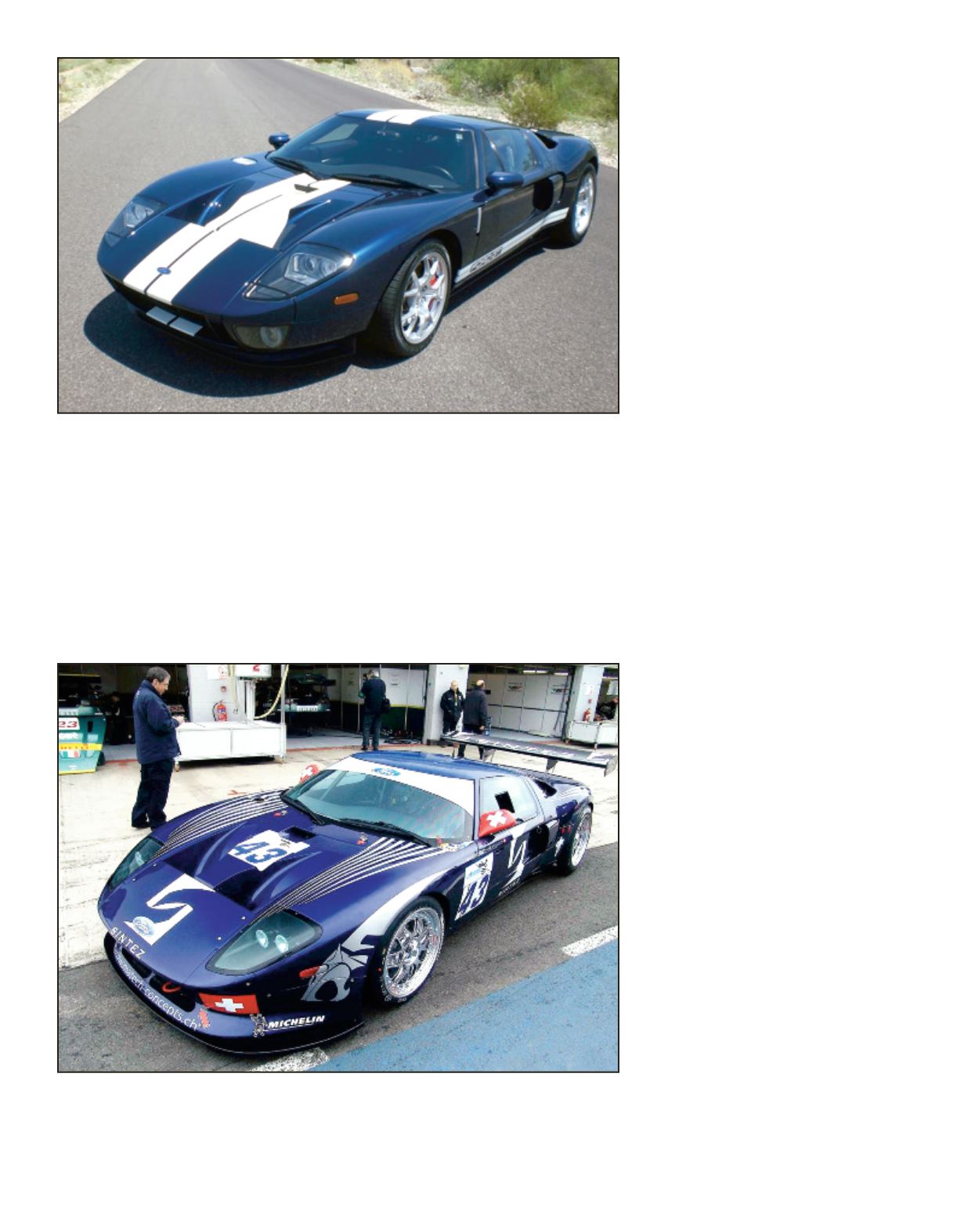

In preparation for Ford’s Centen-
nial Celebration in 2003, Ford execu-
tives decided to do an updated version
of the Ford GT40. This time around it
would be a car designed for the street
instead of the race track. They wisely
selected this plan to develop a “Halo
car” like the Ford GT instead of that
abominable appliance that some execs
wanted, the Ford “Forty-Niner” pas-
senger car. Shown in concept form at
the 2002 Detroit International Auto-
mobile Show, the new GT40 was a
screaming hit. Three “production in-
tent” models, one each in Red, White,
and Blue, were presented to the public
in June 2003 at Ford’s Centennial Cel-
ebration in Dearborn to prove the com-
pany was serious. The new Ford GT
was designed as a street car, with a su-
percharged V-8, air conditioning, and
power windows and locks. It’s appear-
ance wisely paid homage to the origi-
nal GT40s of the 60s.
Although the enthusiast public
clamored for it, Ford did not develop or
sponsor a “race” version of the 2005-6
Ford GT. A few independent racers
created their own versions of the car
in race form and, despite a distinct
lack of sponsorship from Ford, they
made some pretty good showings on
the international road racing scene.
However, nothing approached the
track dominance of the original GT40s
of the 1960s.
For 2016, Ford again turned the
world upside down, announcing a new,
ultra high-tech Ford GT that will be
available in both “street” and “racing”
trim. The car will make it’s racing
debut at the Rolex 24 at Daytona In-
ternational Speedway on January 30-
31, 2016. Ford unveiled the 2016 Ford
GT to a stunned audience at the De-
troit International Automobile Show
in January, 2015. Although there had
been a few rumors about the project,
which had leaked out and spurred
hopes among enthusiasts, everyone
was caught flat-footed by the introduc-
tion of the incredibly stealthy-looking
Liquid Blue Ford GT prototype that
overwhelmed everyone who saw it at
the Detroit Auto Show.
The rest of the manufacturers at
the Detroit show, touting their new
cars, may as well not even have been
there at all. Ford’s surprise was light
years ahead of everyone else. Although
the car’s body shape is very modern,
sensuous and functional, the power-
train is actually tried-and-true, grow-
ing out of Ford’s Daytona Prototype
Ganassi racing program.
The cars will be built at Multi-
Matic in Canada; they have been
building race cars for Ford for a num-
ber of years. Some enthusiasts ex-
pressed disappointment by the V6
powertrain sporting twin turbos,
thinking the new car should properly
The SHELBY AMERICAN
322 Fall 2015
A major manufacturer undertaking production of a limited production super car is a
bold move. Ford’s 2005-2006 GT was a hit right out of the box. The $140,000 list price
didn’t scare too many buyers away and dealers were not bashful about demanding
$20,000 or higher premiums, just because they could. Every one of the 4,038 cars pro-
duced was quickly sold. Secondary market prices soared to the point where, ten years
later, they had doubled.
Because every Ford GT team was independent, the livery of each team’s cars was
unique. Where the original Ford GT40 race cars were campaigned, the factory cars car-
ried similar graphics (except for colors). The 2005-2006 competition cars were each a
reflection of their team and sponsors. There was still no question they were Ford GTs.


















